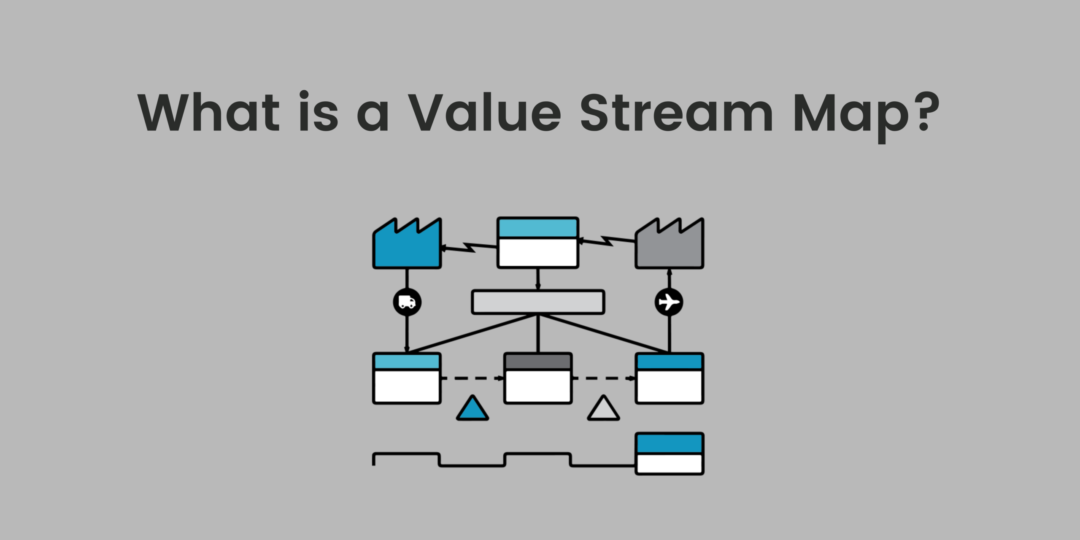Value Stream Mapping
 Adeesh Sharma
Adeesh Sharma
Introduction to value stream mapping
Value stream mapping shows how information and materials move from the start of a process to its conclusion visually. It is used to determine which parts of a process add value and which parts do not, as well as to locate areas that can be improved.
Value stream mapping definition:
Value stream mapping is a method for assessing and improving how information and materials move through a process. A diagram or map that depicts the steps involved in the process, the time and resources needed for each phase, and the flow of materials and information between steps is generally used to describe it.
An overview of value stream mapping's advantages:
Agile software development teams find value stream mapping to be a useful technique for locating process bottlenecks and inefficiencies as well as for streamlining workflow. Teams can streamline their work and improve their efficiency and effectiveness by comprehending the current process and spotting chances for change.
Advantages:
Better visibility: Value stream mapping enables teams to see the larger picture and comprehend how each process step fits into the overall workflow. Teams can use this to find issues and inefficiencies that might not be obvious right away.
Better collaboration: Value stream mapping can assist teams in locating possibilities for cooperation and in collaborating more successfully. Teams can more successfully coordinate their activities if each member is aware of their own roles and duties as well as how work is distributed among them.
Better communication: Value stream mapping can assist teams in more effective process communication as well as the identification of potential communication improvement areas. Teams can more easily share information and ideas and cooperate to optimise the process by developing a visual depiction of it.
How value stream mapping is used in agile software development
Identifying the steps in the process: Identifying the process's phases is the first step in value stream mapping. This could involve tasks like obtaining specifications, creating the feature, coding the feature, testing the feature, and delivering the feature. Teams are better able to comprehend the steps involved in the process and how work moves through it, as well as any bottlenecks and inefficiencies.
Identifying areas that add value and areas that do not: Teams can assess each step in the process to see if it provides value after identifying the various steps involved. The actions that are directly involved in producing a good or service that satisfies the needs of the consumer are those that create value. Unnecessary steps could include meetings, documentation, and permissions that are not essential. Teams can attempt to cut out these processes and streamline the process by identifying areas that do not provide value.
Identifying opportunities for improvement: Teams can find chances for improvement once the process's steps have been defined and reviewed. This could entail streamlining the procedure, automating repetitive operations, or looking for ways to cut waste. Teams can enhance the procedure and boost their effectiveness and efficiency by identifying areas for improvement and making the necessary modifications.
Example of value stream mapping in action
Example 1 (Theoretical Understanding)
To illustrate how value stream mapping is used in agile software development, let's consider a hypothetical example of a team working on a new feature for a software application.
The team begins by creating a value stream map to identify the steps involved in developing and delivering the feature.
The map shows the following steps:
The Team first gathers the requirements, Designs the feature, Codes the feature, Tests the feature and also Deploys the feature.
Next, the team evaluates each step to determine whether it adds value or not. They identify that the steps of gathering requirements, designing the feature, and coding the feature all add value, but the steps of testing the feature and deploying the feature do not add value.
Once that is done, to optimize the process, the team decides to eliminate the step of testing the feature and automate the deployment process to save time and increase check-ins. They also identify opportunities to streamline the process by eliminating unnecessary meetings and paperwork.
After implementing these changes, the team is able to significantly reduce the time and resources required to develop and deliver the feature. As a result, they are able to deliver higher quality products to their customers more efficiently with a shorter feedback loop.
Example 2 (Visual Representation)

All things considered, this example shows how value stream mapping may be utilized to pinpoint areas for enhancement and streamline the procedure in agile software development. Teams can streamline their work and improve their efficiency and effectiveness by comprehending the stages involved in the process and identifying parts that do not provide value.
Best practices for value stream mapping in agile software development
In agile software development, value stream mapping is a useful tool for streamlining workflow. Following best practices and avoiding common mistakes are crucial for maximizing the benefits of value stream mapping.
Best Practices
Include the proper individuals: It's critical to include the appropriate individuals in the value stream mapping process. This could include team members who are actively working on the project as well as stakeholders with a stake in the results. Teams can guarantee the accuracy of the value stream map and the consideration of all viewpoints by including the appropriate individuals.
Focus on the end-to-end process: To create an accurate value stream map, it is important to focus on the end-to-end process, from the beginning to the end. This means considering all of the steps involved in the process, as well as the flow of materials and information between steps. By focusing on the end-to-end process, teams can identify bottlenecks and inefficiencies and optimize the flow of work.
Keep it simple: Value stream maps should be simple and easy to understand. This means avoiding unnecessary details and focusing on the key elements of the process. By keeping the value stream map simple, teams can more easily identify opportunities for improvement and optimize the process.
Update the map regularly: As the process changes, it is important to update the value stream map to reflect these changes. By regularly updating the map, teams can ensure that it remains accurate and relevant and that they are continuously improving the process.
Common pitfalls to avoid:
Not involving the right people: Failing to involve the right people in the value stream mapping process can lead to an inaccurate map that does not accurately reflect the process.
Focusing on individual steps rather than the end-to-end process: By focusing on individual steps rather than the end-to-end process, teams can miss opportunities for improvement and overlook bottlenecks and inefficiencies.
Making the map too complicated: A value stream map that is too complicated can be difficult to understand and can hinder rather than help the optimization process.
Not updating the map regularly: Failing to update the value stream map as the process changes can result in an outdated map that no longer accurately reflects the process.
Conclusion
In conclusion, value stream mapping is a useful technique for enhancing the flow of work in agile software development. Teams can discover bottlenecks and inefficiencies, streamline the process, and improve their efficiency and effectiveness by visualising the process.
Improved visibility, increased cooperation, and improved communication are some of the major advantages of value stream mapping. Teams may collaborate more successfully and provide their clients with higher-quality goods by analysing the present process and spotting chances for change.
It is advised that you try value stream mapping if you are involved in agile software development and haven't yet. You may use value stream mapping to streamline your procedures and raise the productivity and efficiency of your team by adhering to the best practices described in this article and avoiding frequent errors.
Subscribe to my newsletter
Read articles from Adeesh Sharma directly inside your inbox. Subscribe to the newsletter, and don't miss out.
Written by

Adeesh Sharma
Adeesh Sharma
Adeesh is an Associate Architect in Software Development and a post graduate from BITS PILANI, with a B.E. in Computer Science from Osmania University. Adeesh is passionate about web and software development and strive to contribute to technical product growth and decentralized communities. Adeesh is a strategic, diligent, and disciplined individual with a strong work ethic and focus on maintainable and scalable software.